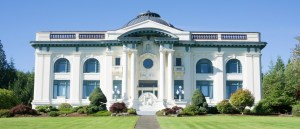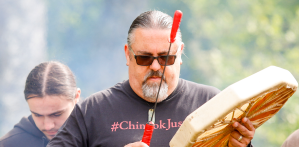Nakamoto forestry products enhance Campfield, Long Beach
Published 10:50 am Tuesday, April 30, 2024
Like much of Campfield, Long Beach, the Nakamoto forestry products used in its buildings require repeated viewings to more fully appreciate their beauty as seen in ever-changing lighting conditions.
Trending
These woods can be better appreciated when one learns about the processes Nakamoto Forestry uses in creating the finest of wood products. Owned and managed by the Nakamoto family, Nakamoto Forestry runs the largest network of siding mills in Japan. It is best known for producing Yakisugi, commonly known as “shou sugi ban” in the West, a wall and ceiling cladding material made exclusively from Japanese cypress (or “sugi).
Yakisugi is intensely burned as a preservative heat treatment. As the world’s largest manufacturer of yakisugi, Nakamoto Forestry has an unmatched dedication to craft and tradition. Owned and managed by the Nakamoto family since the 1920s, Nakamoto Forestry is the only company supplying North America and Europe with authentically milled and heat treated yakisugi, controlling the entire manufacturing process from forest to wall.
Since the 1920s, Nakamoto Forestry has managed sugi and hinoki forests in Hiroshima and has four main mills in Hiroshima and Tokushima prefectures that mill siding and flooring from sugi, hinoki, pine, oak, cherry, cedar, spruce, and larch, among other species. Nakamoto Forestry North America distributes job site-direct throughout North America from a stocking warehouse and pre-finish shop in Portland, Oregon.
Trending
Woods used in the Campfield Sauna:
- Nakamoto Forestry Product: Hinoki
- Key Product Points:
- Native species of cypress in Japan
- Prized for its aromatic and rot-resistant blond wood
- Has a straight grain well-suited to interior and exterior uses
- Historical significance in Shinto rituals and temple construction
- Ancient hinoki structures dating back to 600 AD still standing
- Newly built hinoki structures have a delightful, captivating aroma
Other Product Details:
The fine straight grain and lightweight nature of hinoki wood makes it well-suited to constructing terraces, ceilings, and other structural elements in pagodas. Its strength and flexion resistance prevents collapse during earthquakes.
In addition to use in construction and joinery, hinoki wood is commonly crafted into tubs and other vessels to impart its aromatic properties into baths and ritual cleansing waters.
Hinoki contains natural oils called hinokitiols that make it resistant to rot, fungi, and insects without chemical treatment. This natural durability aids its use in important cultural structures.
The aromatic compounds found in the wood called alpha-terpineol and limonene give hinoki its revered incense-like fragrance. These can defend against insects.
Hinoki Sustainability Key Points:
- Hinoki trees can be sustainably harvested, like all Nakamoto Forestry’s products.
- Hinoki trees are relatively slow growing, taking 40-50 years to reach harvest maturity. This long growth cycle means harvests must be regulated to avoid over-cutting.
- Sustainable harvesting rotations involve selectively logging small patches within hinoki forest stands on cycles of 20 years or longer. This allows new growth time to establish and preserves overall forest integrity.
- Hinoki forests designated for sustainable management should include trees of different age classes to support consistent future yields. Strict limits need to be placed on clearing old growth trees over 200 years old.
- As hinoki wood becomes scarce domestically, Japan has invested in hinoki plantations on rotations up to 60 years for future harvests. This relieves pressure on native ancient forests.
- The natural rot resistance, aroma, and structural integrity of hinoki wood makes it well-suited for use in structures meant to last generations when properly maintained. This maximizes sustainability.
Woods used in the Campfield Campstore
- Nakamoto Forestry Product: Sugi Unoiled
- Key Product Points:
- Natural cypress
- Nakamoto Forestry specializes in the Hachiro variety used specifically for siding in western Japan
- Sugi is milled and graded for maximum durability in exterior applications and showcases the wood’s inherently beautiful grain
Campfield Main Building
Nakamoto Forestry Product: Gendai® (linseed black and linseed amber)
Key Product Points:
- Traditionally called “arai” meaning “washed”, Gendai™ is brushed once removing the textured charred surface seen in Nakamoto’s original Suyaki® line, leaving behind a smooth appearance and unmistakable dark hue. The burnt fiber crevasse shadows are subtle, offering a silky brown color with charred grain details throughout.
- Gendai® will weather over time developing a rich patina that Nakamoto Forestry considers an exercise in traditional Japanese wabi-sabi.









